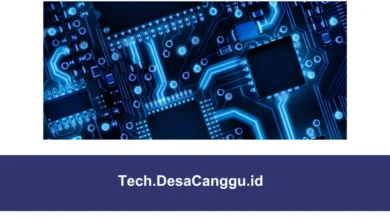The Role of RPM in Chronic Disease Management

In the evolving landscape of healthcare, technology continues to play a pivotal role in enhancing patient outcomes and streamlining medical practices. One significant advancement in this realm is Remote Patient Monitoring (RPM), a method that allows healthcare providers to monitor patients’ health outside the traditional clinical settings. RPM has emerged as a crucial tool in chronic disease management, offering continuous oversight and timely interventions.
Leveraging remote patient monitoring development services, healthcare providers can tailor solutions that meet the specific needs of patients with chronic conditions, ensuring better management, improved quality of life, and reduced healthcare costs. This blog explores the vital role of RPM in chronic disease management and the benefits it brings to both patients and healthcare systems.
Understanding Chronic Disease Management
Chronic diseases, such as diabetes, hypertension, heart disease, chronic obstructive pulmonary disease (COPD), and asthma, are long-lasting conditions that require ongoing medical attention and management. Effective management aims to control symptoms, prevent complications, and improve patients’ quality of life through lifestyle modifications, medication adherence, and regular monitoring of health indicators.
How RPM Works in Chronic Disease Management
Remote Patient Monitoring (RPM) involves the use of digital technologies to collect and transmit health data from patients in one location to healthcare providers in another location. RPM systems typically use wearable devices, mobile apps, and other digital tools to monitor patients’ vital signs, symptoms, and behaviors continuously or intermittently. This real-time data enables healthcare providers to monitor patients remotely, detect changes in health status early, and intervene promptly when necessary.
Benefits of RPM in Chronic Disease Management
1. Continuous Monitoring and Early Intervention
RPM allows healthcare providers to monitor patients’ health metrics, such as blood pressure, blood glucose levels, heart rate, and oxygen saturation, continuously. This continuous monitoring enables early detection of changes in health status that may indicate worsening of the condition or potential complications. Early intervention, such as medication adjustments or lifestyle modifications, can prevent acute exacerbations and reduce hospitalizations.
For example, RPM can monitor a diabetic patient’s blood glucose levels regularly and alert healthcare providers to fluctuations outside the target range. Providers can then intervene with medication adjustments or dietary recommendations to maintain optimal glucose control and prevent diabetic complications.
2. Improved Patient Engagement and Adherence
Engaging patients in their own healthcare is crucial for effective chronic disease management. RPM promotes patient engagement by providing real-time feedback on their health status, adherence to treatment plans, and progress towards health goals. Many RPM systems include patient portals or mobile apps that allow patients to view their health data, receive educational materials, and communicate with healthcare providers remotely.
By actively involving patients in monitoring their health metrics, RPM encourages adherence to medication regimens, dietary recommendations, and lifestyle modifications. Patients who feel empowered and informed about their health are more likely to comply with treatment plans and take proactive steps to manage their chronic condition effectively.
3. Enhanced Access to Care
RPM improves access to healthcare services, particularly for patients in rural or underserved areas who may face challenges accessing regular medical care. By monitoring patients’ health status remotely, healthcare providers can offer timely interventions, preventive care, and medication management without the need for frequent in-person visits.
Telemedicine platforms integrated with RPM technology allow healthcare providers to conduct virtual consultations, review remote monitoring data, and adjust treatment plans as needed. This approach not only reduces travel time and costs for patients but also expands access to specialized medical expertise that may not be locally available.
4. Cost Savings and Healthcare Utilization
Implementing RPM can lead to cost savings for healthcare systems by reducing hospital admissions, emergency room visits, and complications associated with chronic diseases. By proactively managing chronic conditions and detecting health deteriorations early, healthcare providers can intervene before complications escalate, thereby reducing the need for costly acute care services.
For instance, RPM can monitor patients with heart failure for signs of fluid retention or irregular heart rhythms. Early detection of these changes allows healthcare providers to adjust medications, recommend dietary changes, or schedule follow-up appointments to prevent hospital admissions related to heart failure exacerbations.
5. Personalized Care and Treatment Optimization
RPM enables healthcare providers to deliver personalized care based on individual patient data and trends over time. By analyzing continuous streams of health information, providers can tailor treatment plans to meet the specific needs, preferences, and goals of each patient.
For example, RPM can track a patient’s blood pressure readings over time and identify patterns that indicate poor medication adherence or inadequate control. Providers can then intervene with personalized medication adjustments, lifestyle counseling, or additional monitoring to optimize blood pressure management and reduce cardiovascular risk.
6. Support for Aging Populations
As populations age, the prevalence of chronic diseases, such as hypertension, diabetes, and osteoarthritis, increases. RPM provides valuable support for managing these complex health conditions in elderly patients who may have multiple chronic diseases and age-related health challenges.
RPM can monitor mobility, falls, medication adherence, and vital signs in elderly patients living independently or in assisted living facilities. This proactive monitoring helps caregivers and healthcare providers detect health changes early and intervene promptly to prevent complications, hospitalizations, and declines in functional status.
Applications of RPM in Chronic Disease Management
Remote Patient Monitoring (RPM) is widely applicable across various chronic diseases, including:
- Diabetes: Monitoring blood glucose levels and insulin usage to optimize diabetes management.
- Hypertension: Tracking blood pressure readings and medication adherence to prevent cardiovascular complications.
- Heart Disease: Monitoring heart rate, rhythm, and activity levels to manage heart failure or arrhythmias.
- COPD and Asthma: Tracking respiratory symptoms, oxygen saturation, and inhaler usage to prevent exacerbations.
- Kidney Disease: Monitoring renal function and electrolyte levels to manage chronic kidney disease progression.
- Mental Health Conditions: Monitoring mood changes, medication adherence, and therapy progress for patients with depression or anxiety.
Conclusion
Remote Patient Monitoring (RPM) plays a crucial role in chronic disease management by enabling continuous monitoring, early intervention, patient engagement, and personalized care. As healthcare systems continue to adopt digital health technologies, RPM offers a proactive approach to managing chronic conditions, improving patient outcomes, and optimizing healthcare utilization. By harnessing the power of RPM, healthcare providers can empower patients, enhance care coordination, and achieve better health outcomes for individuals living with chronic diseases.



